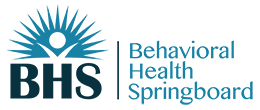7/27/2021 Day One: An Introduction to Youth Problem Gambling
 Participants will learn about youth gambling activities, prevalence rates of youth problem gambling, risk factors and signs and symptoms for youth developing a problem with gambling, and protective factors that can help prevent the development of problem gambling.
Participants will learn about youth gambling activities, prevalence rates of youth problem gambling, risk factors and signs and symptoms for youth developing a problem with gambling, and protective factors that can help prevent the development of problem gambling.
Learning Objectives - Participants will be able to:
- Describe youth gambling activities
- Describe the significance of the youth problem gambling prevalence rates
- Explain how risk factors and protective factors play a role in youth developing or preventing youth problem gambling.
- Identify behaviors of youth experiencing problem gambling.
- Determine how to implement evidence-based prevention efforts to combat youth problem gambling.
Agenda:
9:00 am – 10:00 am – NC Problem Gambling Program Services
10:00 am – 10:15 am break
10:15 am – 11:15 am – NC Problem Gambling Program Services continued
11:15 am – 11:45 am – Lunch
11:45 am– 12:45 pm – Youth Problem Gambling in NC
12:45 pm – 1:00 pm break
1:00 pm – 2:00 pm – Youth Problem Gambling in NC continued
Contact Hrs: 4:00
7/28/2021 Day Two: Stacked Deck
Participants will learn how to apply for the NCPGP Stacked Deck mini-grant and how to facilitate the curriculum to fidelity by being guided through all six lessons and activities. In addition, the participants will learn how to utilize the Stacked Deck guidebook and PowerPoint presentation to facilitate the curriculum to students. The curriculum can be offered to students in three different ways. The curriculum can be offered in the classroom, a virtual learning environment (provided by your organization or school), or in a self-guided learning platform for students to access independently or as a cohort of students guided by a facilitator (provided by our program). Each of these options will require the facilitator to meet in the classroom or in a virtual environment with students to process the curriculum material.
Learning Objectives - Participants will be able to:
- Recognize modern commercial gambling that includes stacked odds that create the “house edge.”
- Identify gambling as an activity that can become addictive, and recognizable causes, risk factors, and signs of problem gambling.
- Describe the two factors that contribute to problem gambling; the lack of knowledge about gambling and misunderstanding about how gambling actually works.
- Identify good decision-making and problem solving as essential skills to practice.
- Define the ways to overcome barriers to good decision-making and problem-solving.
- Describe how to facilitate the Stacked Deck curriculum.
- Apply for the Stacked Deck grant.
- Explain how to deliver the curriculum in a virtual environment.
Agenda:
9:00 am – 10:00 am - Lesson One Gambling History and The House Edge and Two Problem Gambling
10:00 am – 10:15 am break
10:15 am– 11:15 am - Lesson Two Problem Gambling Continued and Three Gambling Fallacies
11:15 am – 11:45 am lunch
11:45 am – 12:45 pm - Lesson Four Smart Gambling and Five Barriers to Good Decision Making
12:45 pm – 1:00 pm break
1:00 pm – 2: 00 pm - Lesson Six the Stacked Deck Quiz Game and how to Apply for the Grant and Facilitation Skills
Contact Hrs: 4:00
7/29/2021 Day Three: Adverse Childhood Experiences and Resilience-Focused Skills Lab
 The Adverse Childhood Experiences Study enlightened the worlds of health care, human services and education regarding the relationship between childhood trauma and social, behavioral, emotional and physical health outcomes across the lifespan. Children who are immersed in toxicity at home struggle to perform well in school and most other aspects of their lives. A Washington State study showed that students with three or more ACEs were: two and a half times more likely to fail a grade, score lower on standardized tests, have language difficulties, are suspended or expelled more often, are designated to special education more frequently and have poorer health, than those students who have a score of zero.
The Adverse Childhood Experiences Study enlightened the worlds of health care, human services and education regarding the relationship between childhood trauma and social, behavioral, emotional and physical health outcomes across the lifespan. Children who are immersed in toxicity at home struggle to perform well in school and most other aspects of their lives. A Washington State study showed that students with three or more ACEs were: two and a half times more likely to fail a grade, score lower on standardized tests, have language difficulties, are suspended or expelled more often, are designated to special education more frequently and have poorer health, than those students who have a score of zero.
As educators become more aware of these effects, the question becomes, what can we do about it. This session will discuss the outcomes of the ACE Study and will offer some specific resiliency tools that can be used by the teacher, and
other staff and administrators, to mitigate the stress of managing so many traumatized children. It will also focus on how the tools can be used by the children themselves, to help settle their nervous systems and bring their brains and bodies into a state where they are able to have more control over themselves and can learn and participate in the classroom in a healthy way.
Learning Objectives: Participants will be able to:
- Describe the Adverse Childhood Experiences Study
- Explain the relationship between ACEs and trauma and addictions such as problem gambling
- Apply Understanding of stress and relaxation response
- Identify basic skills to turn off stress response and turn on relaxation response
- Create “everyday resiliency practice” of applying tools
Agenda:
9:00 am – 9:45 am – Introductions of participants and to model
9:45 am – 11:15 am – Adverse Childhood Experiences Study
11:15 am – 11:45 am – Lunch
11:45 am – 2:00 pm – Reconnect for Resiliency Curriculum Tools and Practice
Contact Hrs: 4:00
